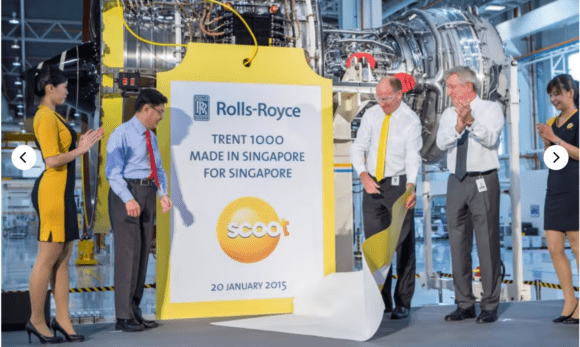
Singapore
The air show gets all the attention, but once the show is over, what remains? It appears that big things are happening in Singapore that will anchor the state in commercial aviation.
- In 2021, GE celebrated 40 years for GE Aviation Engine Services Singapore. GE is looking for more talent in Singapore, too. The latest news from the show is that GE Aerospace will Establish a ‘Smart Factory’ at its Singapore Aircraft Engine Repair Facility. This is an $11m investment. Singapore is GE Aerospace’s largest location for engine component MRO, accounting for more than 60% of its global repair volumes.
- RTX, the parent company of Pratt & Whitney, is also investing in Singapore. The company announced it is ramping up the industrialization of repairs for certain components of Pratt & Whitney GTF engines across its Singapore-based maintenance repair and overhaul (MRO) facilities, including Component Aerospace Singapore, Pratt & Whitney Component Solutions, and Turbine Overhaul Services. The value of this increased capability wasn’t announced, but the OEM does state: “Adding GTF MRO repair capability for 235 parts by 2025.”

While there are no show announcements, it is important to recognize that Rolls-Royce also has a long local history. The image above shows the first made-in-Singapore engine to power locally-based Scoot’s fleet of 20 Boeing 787s.
Engines are probably the sharpest point of commercial aviation development. The engines enable better fuel burn, longer range, and higher payload. Whereas, as we saw from yesterday’s Airbus announcement for the A330neo, tweaks to wings might bring you a 5% improvement. But the GTF and LEAP deliver well over the promised 16% – our analysis of actual data for US airlines shows 20% is the more accurate number.
Consequently, from what we see from the two big engine makers, Singapore is getting a significant boost to its commercial aviation footprint. The downstream impact will be a rising demand for talent with cutting-edge skills – in metallurgy, composites, and added manufacturing.
This type of investment is not going to be a one-off either. As the skill pool deepens, GE and RTX will have to follow up with more investment to support the local R&D that will emerge. For Singapore, this is a virtuous cycle. We can see that the engine OEMs are following up on earlier investments with more. And there will be more to come, long after the impact of the air show has dissipated.
Singapore can’t rest on its laurels, though. Competition is global and fierce. Everyone wants a piece of this cutting-edge technology skills demand. The key here is for Singapore to maintain its headstart.
Views: 6




